
TVS Apache RTX 300 Adventure Bike Unveiled At Auto Expo 2025
- Jan 17, 2025
- Views : 7908

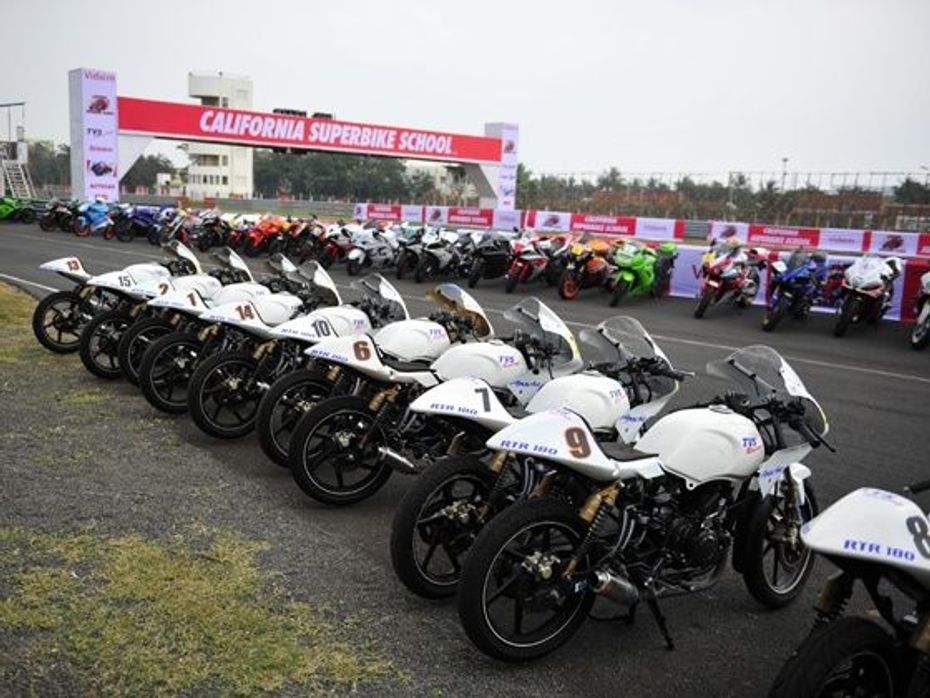
So, we have already told you what we learnt on day one or in Level 1. We learned five new riding techniques with enough and more theory and practicals thrown in. If you haven't read it, we suggest you do so, here. Day two or Level 2 is all about vision. It is based on the fact that you only go where you look. And this is where we ended up…
Reference points
Reference points are markers one needs to pick up when one is riding on the track or even on the road. These markers help tell the rider where he/she is exactly on the road or track. And with familiarity, comes confidence. Now, the more reference points one has, the better. But the minimum is three. One for the turn-in point, one for the apex and one for where one wants to end up at the exit of a corner. These markers can be anything from foliage at the side of a track to a marshal’s post to the kerbs. The ones to choose though, are the ones that are more permanent and more in your natural line of sight. So, things like tyre marks on the track or change in surface or even a mark on the kerb are all good choices.
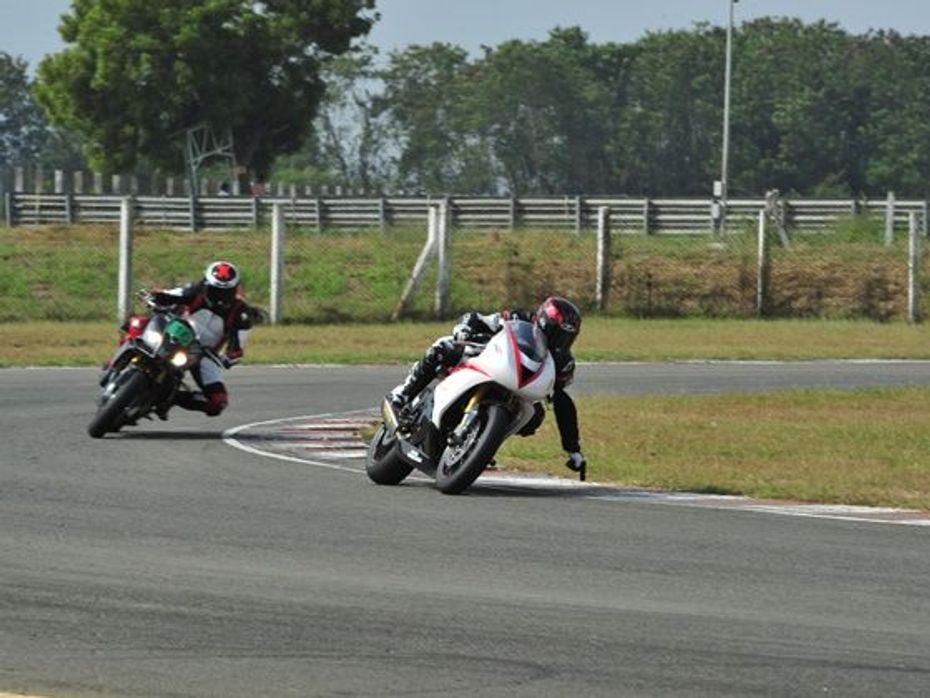
What did I learn?
The first time I went about hunting for my reference points, not only was I slow, but I was pretty erratic as well. All the learning about throttle control etc went out of the window. But, a couple of laps later, not only was I comfortable applying everything I had learned in Level 1, but because now I knew where the markers were and what I was supposed to be doing at each of these markers – rolling off, light braking, turning in, getting back on the throttle etc, I was quicker and more consistent lap after lap.
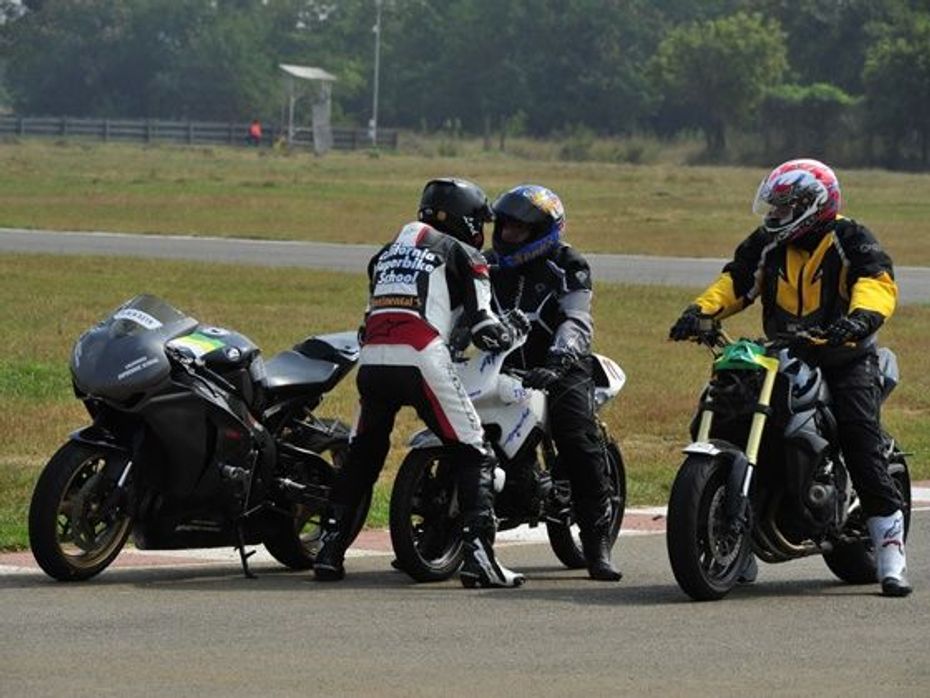
Changing lines
This exercise involves exploring sections of the track or road which we otherwise consider as cursed. The idea, say the California Superbike School’s experienced coaches, is to get comfortable with the less grippy side of the track at slower, more manageable speeds so that in case we end up running wide later when riding flat out, we don't freeze due to the fear of the unknown. It’s also a good idea to ride the kerbs, especially at exits to understand how much grip there is.
What did I learn?
Exploring sections of the track I had never visited before actually helped me figure out how wide the track really was. And what I had considered slippery, wasn't all that bad. So when I went back to riding the regular lines, I wasn't afraid to push a little harder knowing running wide wasn’t going to be catastrophic.

Three Step
The three step is an extension of the two step skill and just the exercise to find out how well the reference point gig went. As in two step, the rider must pick the turn-in point but just before hitting it, the rider must move his eyes to the apex. And again, just before hitting the apex the rider’s gaze must move towards a point at the exit. As with the two step, the three step too is supposed to string together a turn so the rider executes it effortlessly and almost involuntarily.
What did I learn?
A couple of things. First, I hadn't picked my reference points well. So, even though I was hitting the turn-in point, I had picked the apex reference point too far deep that I just couldn't locate it till I was almost past it. And then to quickly shift my gaze upto the exit point to complete the three step just hurried my riding and made me uncomfortable.
Two. Once my coach Martin helped me locate a good apex and then threw in an additional reference point leading to the apex marker, things truly slowed down for me. Not in terms of speed mind, but in the head. Needless to say, I was a lot more comfortable thereafter.
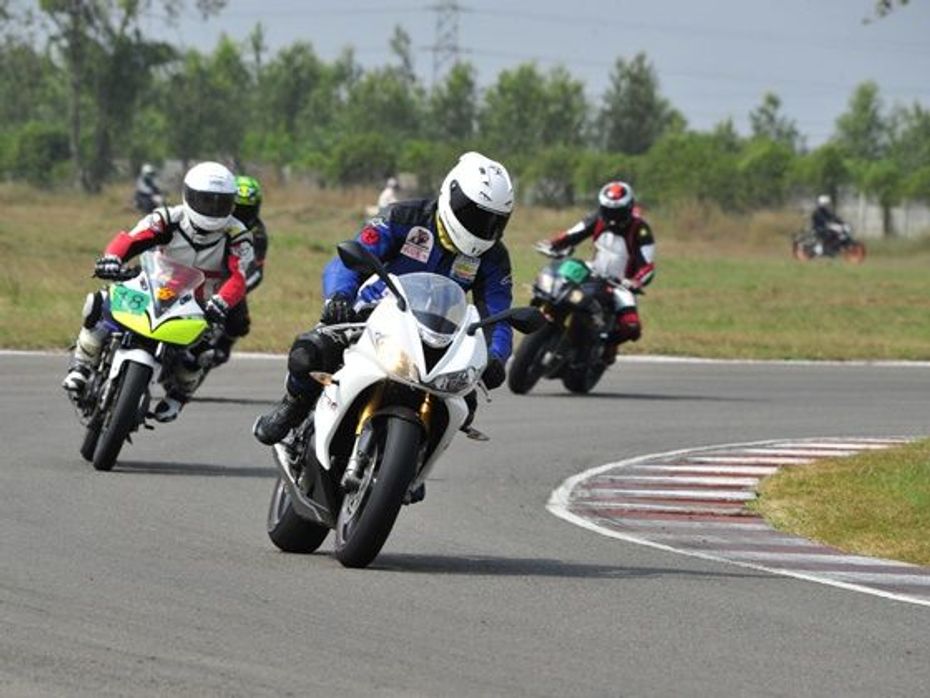
Wide view
Target fixation. It’s a normal human tendency. And we also only fixate on items that we fear. So when riding, we tend to look for the kerb we don't want to ride; the oil patch we don't want to hit; and the rider upfront, we don't want to follow. But because we fixate, we end up doing all the things we want to avoid. So, how do we counter this? By using wide view. In theory, wide view urges the rider to look as far into the horizon as possible and use the peripheral vision to pick things that need to be avoided. This approach also helps in pulling overtaking moves in races more easily, say the CSS coaches.
What did I learn?
Adopting wide view gave me a quicker reaction time. And like three step, it slowed things down in my head leaving me feeling more comfortable overall. It also meant I could focus on my reference points instead of making the same mistakes the rider in front of me was making like entering a corner too hot, running wide or chopping the throttle mid corner, things I would have done if I had fixated on him.
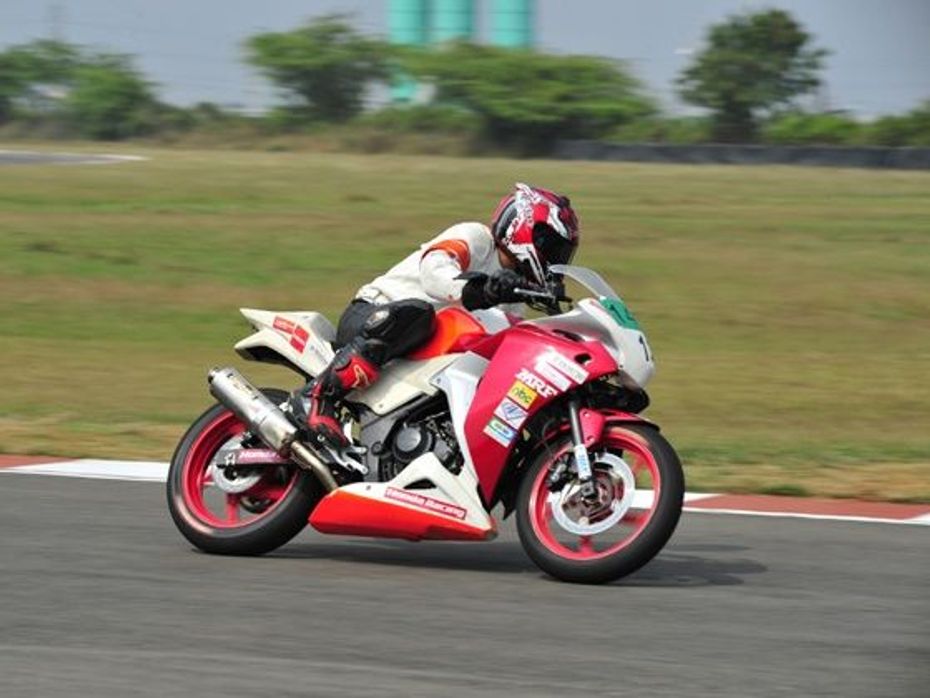
Pick Up Drill
The last drill of the day is the Pick up drill. It is a very important skill according to the California Superbike School India curriculum and a must for those who want to go racing. The technique which is the same as the quick turn, only applied in the opposite direction, allows the rider to get on the power sooner and make a quicker exit. This skill is best used exiting corners that lead to long straights. So, after the bike has hit the apex, the rider must start pushing on the outside bar to stand up the motorcycle as soon as possible. Because the bike is upright sooner, it also allows the rider to get on the throttle earlier and more aggressively.
What did I learn?
Not much honestly for the simple reason neither the conditions nor the bike allowed me to see the benefit of this technique. You see, the pick up drill works when there’s abundance of power and you want to lay it down as soon as possible, which a leaned over bike doesn't allow. But with the power I had, I could whack open the throttle while leaning over and still have traction. If the track were wet however, I would probably have put more heart in learning this skill. No wonder Martin, my coach, thought I had a long way to go when it came to perfecting the pick up drill.
Another day, another five skills learned. Now what remains is Level 3. And from what we are told by the coaches here at the California Superbike School, it is a very physically demanding level. Day three or Level 3 coming up then...

TVS Apache RTX 300 Adventure Bike Unveiled At Auto Expo 2025

2025 Suzuki Access 125 Launched At Auto Expo 2025

BREAKING: 2025 KTM Adventure Range Unveiled In India

Hero Xtreme 250R Same Price Other Options: Auto Expo 2025

Ola Roadster X Electric Bike Production Begins

2025 KTM 390 Adventure S To Launch Tomorrow

BREAKING: Royal Enfield Scram 440 Launched In India

TVS Jupiter CNG Scooter Unveiled At Auto Expo 2025

Suzuki E-Access VS Suzuki Access 125 Petrol : Differences Explained
India's largest automotive community
 Simple One
Rs. 1.66 Lakh
Simple One
Rs. 1.66 Lakh
 Vespa S
Rs. 1.36 Lakh
Vespa S
Rs. 1.36 Lakh
 KTM 390 Adventure
Rs. 3.67 Lakh
KTM 390 Adventure
Rs. 3.67 Lakh
 KTM 390 Adventure X
Rs. 2.91 Lakh
KTM 390 Adventure X
Rs. 2.91 Lakh
 KTM 250 Adventure
Rs. 2.59 Lakh
KTM 250 Adventure
Rs. 2.59 Lakh